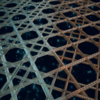Paink GK, Kolle S, Le D, Weaver JC, Alvarenga J, Ahanotu O, Aizenberg J, Kim P.
Dynamic Self-Repairing Hybrid Liquid-in-Solid Protective Barrier for Cementitious Materials. ACS Applied Materials & InterfacesACS Applied Materials & Interfaces. 2020;12 (28) :31922 - 31932.
Publisher's VersionAbstractCorrosion and surface fouling of structural materials, such as concrete, are persistent problems accelerating undesirable material degradation for many industries and infrastructures. To counteract these detrimental effects, protective coatings are frequently applied, but these solid-based coatings can degrade or become mechanically damaged over time. Such irreversible and irreparable damage on solid-based protective coatings expose underlying surfaces and bulk materials to adverse environmental stresses leading to subsequent fouling and degradation. We introduce a new concept of a hybrid liquid-in-solid protective barrier (LIB) to overcome the limitations of traditional protective coatings with broad applicability to structural materials. Through optimization of capillary forces and reduction of the interfacial energy between an upper mobile liquid and a lower immobile solid phase, a stable liquid-based protective layer is created. This provides a persistent self-repairing barrier against the infiltration of moisture and salt, in addition to omniphobic surface properties. As a model experimental test bed, we applied this concept to cementitious materials, which are commonly used as binders in concrete, and investigated how the mobile liquid phase embedded within a porous solid support contributes to the material’s barrier protection and antifouling properties. Using industry standard test methods for acid resistance, chloride-ion penetrability, freeze–thaw cyclability, and mechanical durability, we demonstrate that LIBs exhibit significantly reduced water absorption and ion penetrability, improved repellency against various nonaqueous liquids, and resistance to corrosion while maintaining their required mechanical performance as structural materials.Corrosion and surface fouling of structural materials, such as concrete, are persistent problems accelerating undesirable material degradation for many industries and infrastructures. To counteract these detrimental effects, protective coatings are frequently applied, but these solid-based coatings can degrade or become mechanically damaged over time. Such irreversible and irreparable damage on solid-based protective coatings expose underlying surfaces and bulk materials to adverse environmental stresses leading to subsequent fouling and degradation. We introduce a new concept of a hybrid liquid-in-solid protective barrier (LIB) to overcome the limitations of traditional protective coatings with broad applicability to structural materials. Through optimization of capillary forces and reduction of the interfacial energy between an upper mobile liquid and a lower immobile solid phase, a stable liquid-based protective layer is created. This provides a persistent self-repairing barrier against the infiltration of moisture and salt, in addition to omniphobic surface properties. As a model experimental test bed, we applied this concept to cementitious materials, which are commonly used as binders in concrete, and investigated how the mobile liquid phase embedded within a porous solid support contributes to the material’s barrier protection and antifouling properties. Using industry standard test methods for acid resistance, chloride-ion penetrability, freeze–thaw cyclability, and mechanical durability, we demonstrate that LIBs exhibit significantly reduced water absorption and ion penetrability, improved repellency against various nonaqueous liquids, and resistance to corrosion while maintaining their required mechanical performance as structural materials.


